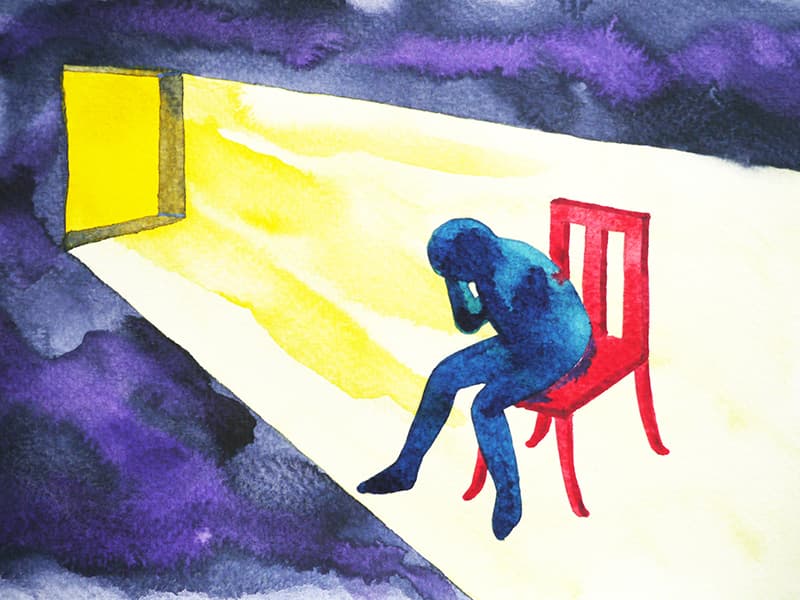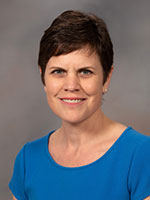Emotional toll of patient suicides strikes those who treat them, too

Whenever someone is lost to suicide, the people left behind may blame themselves, wonder if they could have done something more, succumb to self-doubt, wrestle with anger and grief.
Among those people are psychiatrists.
In the wake of a patient’s suicide, the range and intensity of their emotions can be comparable to those of their client’s loved ones.

“The feelings can be guilt, shame, sadness and regret – even when it involves someone they’ve known only briefly,” said Dr. Sara Gleason, associate professor of psychiatry and human behavior at the University of Mississippi Medical Center. “The treating professional is a victim of the suicide in many ways, too.”
No wonder, then, that 97 percent of all therapists have said client suicide is their greatest fear.
It is not a baseless dread. At least half of those who practice psychiatry can expect to confront such a tragedy least once in their careers, as will more than 20 percent of psychologists.
“Every day, I work with at least one patient after an attempted suicide, or one who has expressed suicidal ideation or has a long history of suicide attempts,” said Gleason, who encounters such cases in her work in the emergency room, in-patient care and in consultations with other physicians.
“I could go home today and read in the paper that a patient I’ve treated committed suicide.”

Every psychiatrist has treated a patient who has at least talked about taking his or her own life, said Dr. Scott Rodgers, chair of UMMC’s Department of Psychiatry and Human Behavior .
“We provide patients with a safe, confidential space for discussing sometimes sad topics like suicide. Our goal is to relieve suffering, help patients survive and overcome these thoughts. You might invest so much time in them that it comes as a shock when there is a suicide.
“Between the patient and the psychiatrist, there is a connection that is deep and meaningful. It’s emotional. You care, which is essential.”
Because health care professionals, not just psychiatrists, do care, the personal impact of a patient suicide is even greater than that of a sudden death by other means, a 2014 study shows. The longer the professional relationship, the greater the distress.
Of course, even an attempted suicide is agonizing: “Psychiatrists ask themselves, ‘What triggered it? What do I need to change? How do I reach out the patient’s family? Where is the patient now?’” Rodgers said.
Of course, there’s always the chance of being sued – even after a suicide attempt. Minus the threat of legal action, Gleason said, even when the patients’ loved ones don’t blame the psychiatrist, all those troubling emotions may surface still.
Experience, sometimes, may provide some measure of solace. “The further along you are in your career, you’re more likely to have seen colleagues go through this and survive,” Gleason said.
“Early in your training, though, at a point when you’re trying to build confidence in your skills, this can be a real blow.”
The blow is heavier without support from colleagues; there is a sense of loneliness.
“There is also the feeling that people are watching you; that sense of shame,” Gleason said.
Certainly, the media focuses on the details of high-profile deaths – as with Robin Williams, Anthony Bourdain, Kate Spade and more.
On the other hand, public scrutiny of celebrity suicides can “break down barriers,” Rodgers said. “Patients may say, ‘People with money and fame are not all that different from me.’
“It can shine the spotlight on mental illness.”
Maybe more than ever now, the spotlight is shining also on suicide prevention: The Zero Suicide initiative is a nationwide strategy based on the notion that, for anyone under behavioral and mental health care, suicides can be averted.
“That name – ‘Zero Suicide’ – can be intimidating,” Gleason said. “It implies that if you’ve had one suicide, you have failed. It should be seen instead as aspirational, not punitive.”
The goal is to have safety measures in place for at-risk patients, which is also a target of the Mississippi Suicide Prevention Plan. The approach is similar to Zero Patient Harm, an error prevention measure in hospitals.
“If that’s not our aspiration,” Gleason said, “then how would we ever improve?
“But it’s not just mental health providers who are on the front lines. As a patient, you’re more likely to see a primary care provider prior to a suicide attempt; then you see a psychiatrist. That’s why there’s been a move toward more screening.
“It’s not just an occupational hazard for mental health professionals, but the challenge for them is helping other physicians make use of available resources.”
The reality, though, is that, daily, mental health professionals are trying to cope with a loss many take personally – so personally, that some are moved to be present at the patient’s funeral. For her part, Gleason would seek guidance from mentors and others before attending one.
“It would have to be done thoughtfully,” she said. “And it should be done to meet the needs of the family, not the needs of the physician.”

Other resources for therapists include other therapists. “They feel less isolated when colleagues and supervisors are supportive,” said Dr. Courtney Bagge, associate professor of psychiatry and human behavior, and director of suicide research in the Department of Psychiatry at UMMC.
“In interviews they said, across the board, that what was not helpful was when peers and supervisors say, ‘This was inevitable.’ They consider that an empty gesture. But part of it is that people don’t know what to say.”
Whatever is said by a colleague, it should be “non-judgmental,” Rodgers said. “And emphasize that going into isolation is not helpful, that it’s important to talk about what happened. It shouldn’t be viewed as something rare. It happens to the best of us.
“The fact is, though, that many of us are unprepared when this happens. It’s not something we talk about much in medical school.”
Professional societies, including the American Psychiatric Association and the American Association of Suicidology, offer help as well. It’s vital to get that help, Rodgers said, especially considering what’s at stake.
“Patients referred to us often have a history of suicidal behavior. So, as a psychiatrist, you’re taking on a weighty risk. Some are reluctant to take it on. Others proceed anyway. Because patients need us.”
For a detailed look at therapists’ reactions to patient suicides, The American Journal of Psychiatry offers this study. For anyone battling thoughts of suicide or other acts of self-harm, or knows someone who is, resources include the National Suicide Prevention Lifeline, which provides free and confidential support 24/7.


